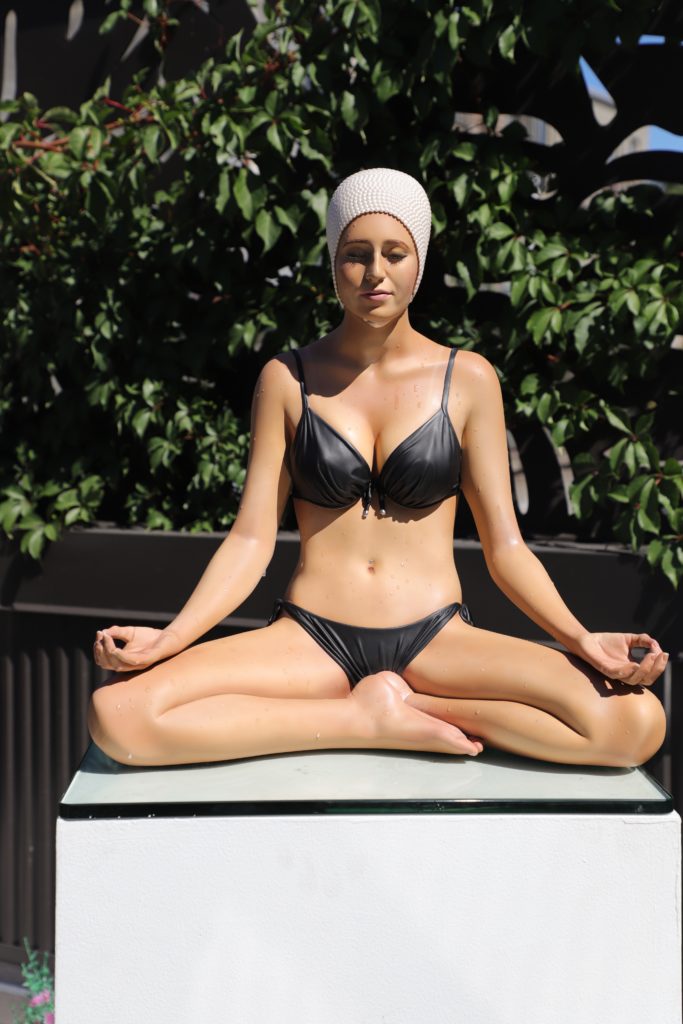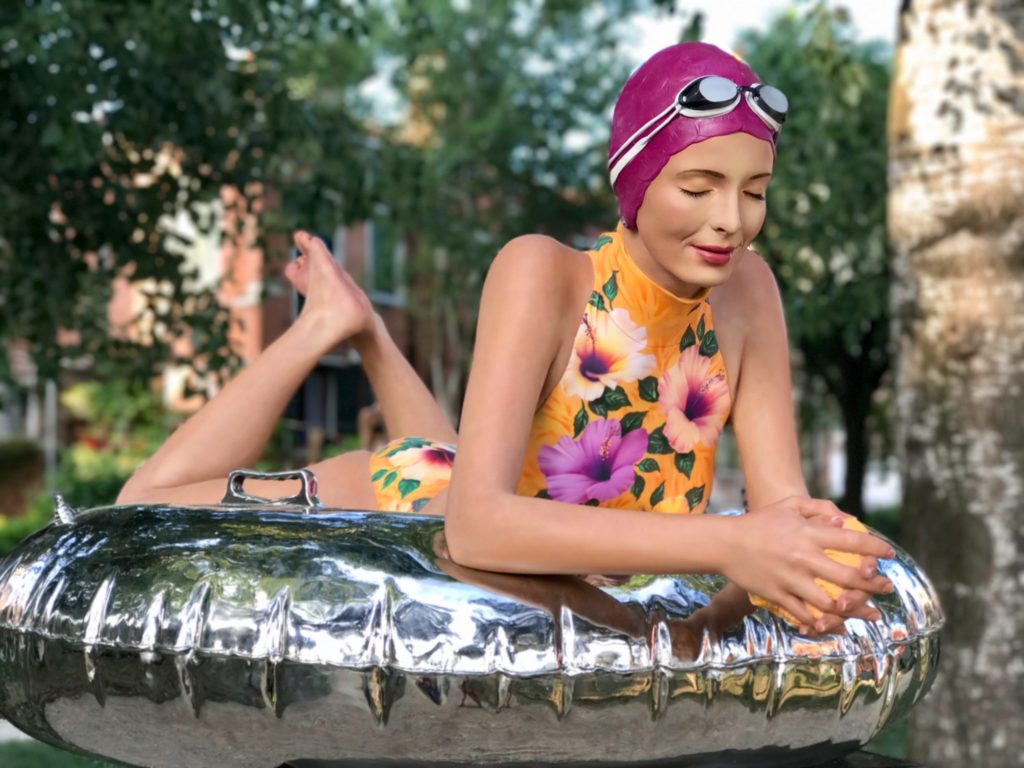1.Tell us what you do and your beginnings.
I am an American sculptor, author and a mother. All my life I knew I wanted to be an artist. At the age of ten, I helped my grandfather design our home by spray-painting an outline of each room on the lawn. He then built the home for my parents. By fifth grade, my teacher affirmed my art skills by asking me to give weekly drawing lessons to my class. While in high school, I sold my first painting. I studied at Hofstra University, Temple University, and graduated from the School of Visual Arts with a Bachelor of Fine Arts degree.
In 1967, all the while working as an illustrator to pay for my college education, I illustrated for the New York Times, and made album covers for Alice Cooper and The Rolling Stones. I’m one of the three founding members of the Hyperrealist movement that began in the 1970’s. I am best known for my figures of swimmers and dancers.
I‘ve taught, lectured, and given workshops at the Metropolitan Museum of Art and the Solomon Guggenheim Museum. In 2011, I founded the Carole A. Feuerman Sculpture Foundation.

In 1978 that I decide to switch from Illustration to fine art. I created thirteen erotic sculptures and exhibited them in a in a gallery in Fort Worth, Texas. The show was called “Rated X”. But unfortunately, after the opening, the art dealer told me Fort Worth was not ready to show my erotic art. The next day I was told to remove my work and go home. Although I was disappointed, I got back to New York and decided that I would never make erotic art again. I created a new body of work about leisure sports.
One day, while sitting on a beach, I visualized a swimmer coming out of the water… hair slicked back, water dripping off their skin and the look of ecstasy on their face as she accomplished something that made her happy. I identified with her and decided to create a sculpture of a swimmer. I called it Catalina. It went on to become my most famous sculpture and led to my creating my many sculptures of swimmers.

2.What does your work aim to say?
My work never just mimics the human body. I want the work to take the body to another level. It is important to me that my swimmers tell my stories, about conquering fear, survival, and balance perserverance. I wanted the viewer to have an emotional bond with each piece, and to evoke happiness – nothing disturbing or off-putting, only tranquillity, sensuality, and beauty. That is why I have named them The Golden Mean, Balance, Perseverance, and Survival of Serena.
3.Where do you find inspiration for your art?
I’m inspired by the wonder of life, and people. People fascinate me. I enjoy them and love to watch them interact. I pay attention to their body language and how they handle their feelings and their problems. My realistic style allows me to present a universal moment to which every viewer can relate.
Continue on #MuseumWeek Magazine.
